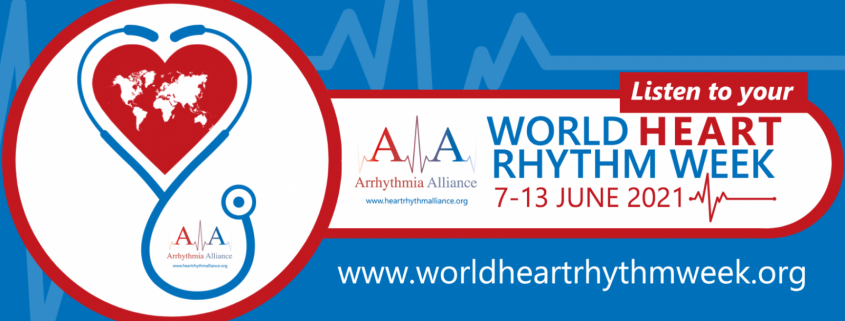World Heart Rhythm Week
Arrhythmia Alliance are supporting World Heart Rhythm Week 7th to the 13th June to raise awareness of the importance of getting to know your own pulse. Spreading this campaign to patients is important for their health so they can track their pulse and seek early intervention if necessary, reducing the risk of serious complications down the line.
But what is an arrhythmia?
A cardiac arrhythmia is when the heart beats too fast, too slowly or irregularly. Some irregularities maybe down to day to day living such as, drinking too much coffee or certain types of medication. However, some are due to faults within the electrical impulses within the heart function. This may lead to more serious events occurring for example heart failure, blackouts, syncope, electrolyte disturbances, infection, thyroid disorders, sudden cardiac arrests, stroke, heart attack and cardiomyopathy.
Is my pulse normal?
An average person’s normal pulse range can be from 60-100 beats per minute. However, anything above or below can be considered abnormal and should always seek advice if your pulse is either high or low and are feeling unwell.
Facts about abnormal arrythmias
- In the UK 100,000 people die from sudden cardiac events each year. Which is more than breast, lung cancer and aids combined.
- It is possible that the abnormal arrythmias to present with no symptoms at all, which is why It’s important to know what is normal for you.
- Worldwide abnormal arrythmias causes 15-20% of deaths every year.
- 40% of adults and 30% of children are commonly misdiagnosed with epilepsy with many having abnormal heart arrythmia.
- In the US every 35 in 100,000 cases are caused by SVT (sudden increase in heart rate).
Arrhythmia alliances guide to knowing your pulse rate:
- When assessing your resting pulse make sure you sit down 5 minutes before taking it. Also note anything you may have done before hand to lower or raise your pulse such as taking nicotine or having caffeine.
- Take off the watch or jewellery on the wrist your using. Lay your arm flat on a surface with your palm facing up and bend your elbow slightly.
- With your other hand use your three middle fingers and index fingers and place them on your wrist at the base of your thumb. The fingers should sit on the bone on the edge of your wrist the stringy tendon attached to your thumb. Note you need to apply firm pressure and move your fingers until you find the best position to take your pulse.
- Once you’ve found the right place, for thirty seconds count your pulse and then multiply by 2 to get beats per minute. Don’t forget to record the results as this will help indicate any long-term irregularities.




